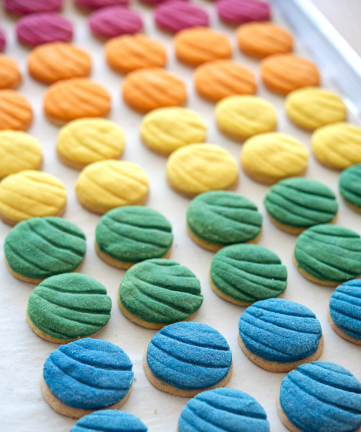Meeting the new expectations for natural color in bakery
As bakery brands move away from artificial dyes, developers face a growing challenge: how to deliver bake-stable natural colors that are vibrant, appealing, and clean-label. Natural colors in bakery must perform on multiple fronts.

They need to withstand long bake times and high heat, bring visual appeal to decorations and fillings, align with simple, familiar ingredients on pack, and work across diverse formats — from cookies and cakes to enriched doughs and breads.
Consumers today expect both eye-catching visuals and ingredients they can trust in bakery, making this category one of the most technically exciting spaces for heat-stable natural colors. And success isn’t just about achieving color that survives baking — it’s about selecting the right plant-based shade and making recipe adjustments where necessary to ensure stability and performance.
How baking affects natural colors
Baking is as much about chemistry as it is about ingredients. Each baked good relies on a careful balance of leavening, moisture, and heat to achieve the right rise, texture, and flavor. That same chemistry can influence how bake-stable natural colors perform. Plant-based shades respond to factors like pH, water or fat content, and bake profiles, so the color dosage often needs adjustment for each recipe and process.
Chemically leavened batters, such as those using baking soda or baking powder, have a higher pH than yeast-leavened doughs, which can affect the vibrancy of certain reds and pinks. Cakes batters with higher water content are exposed to more extensive heat and chemical reactions than lower-moisture cookies or breads, which changes how colors perform. Therefore, it’s not just about time and temperature — it’s understanding how the recipe and baking process interact with natural colors to achieve consistent, bake-stable results.
The key takeaway: Formulation success in bakery comes from considering both the recipe and the process, selecting the right plant-based shade, and tweaking the formula when needed to deliver reliable, vibrant color.
Navigating natural reds and pinks in bakery
Reds and pinks remain some of the most in-demand natural colors in bakery. While classic red velvet continues to inspire, today’s consumers are also drawn to playful formats like strawberry cookies, conchas, and pastel baked goods. Achieving these shades naturally comes down to selecting the right plant-based red and designing the recipe to support it.
There are two primary paths for natural reds for bakery:
| Shade Target | Plant-Based Approach | Product Examples |
| Warm red hues | Beetroot-based shades (e.g., EXBERRY® Shade Fiesta Pink) | Red velvet–style hues, warm-toned cookies & cakes |
| Fresh light pinks | Anthocyanin-based reds from other vegetables sources (e.g., EXBERRY® Shade Rubescent Red) | Strawberry cookies, pastel pink breads & cakes |

For detailed guidance on creating consistent, bake-stable natural reds, watch our on-demand bakery webinar. It features a section on optimizing reds for bakery, covering key considerations such as pH, color dosage and blending, and the use of ascorbic acid. Click Register Now to access instantly.
Expanding the palette: Multi-color bakery applications
While reds and pinks are in-demand, there’s also growing interest in using a broader palette to create playful, eye-catching baked goods. Concepts like the Concha Cookies below show how the full rainbow color hues — including pink, orange, yellow, green, purple, and blue — can work together to create visually striking results, while still using plant-based colors that are clean-label and bake-stable.
Concept Spotlight: Concha Cookies
 Our culinary innovation team created Concha Cookies to spark ideas and support your product development journey. Inspired by the classic Mexican pan dulce, these sugar cookies are lightly scented with cinnamon and orange, then finished with a colorful sugar topping in the traditional shell pattern.
Our culinary innovation team created Concha Cookies to spark ideas and support your product development journey. Inspired by the classic Mexican pan dulce, these sugar cookies are lightly scented with cinnamon and orange, then finished with a colorful sugar topping in the traditional shell pattern.
The team made the shells in a vibrant rainbow range to create eye-catching appeal. A few key tricks helped bring the concept to life: coloring only the shell topping, using a simple dough of sugar, vegetable shortening, a touch of flour, salt, and vanilla, and pressing the topping with a concha cutter to achieve the signature shell design before baking. Oven temperature and baking times were optimized to minimize browning while maintaining the desired texture and flavor.
The Concha Cookies showcase how thoughtful recipe design and plant-based colors can come together to create visually striking, on-trend bakery concepts. Want to see more innovative ideas and formulation insights? Register now to watch the on-demand bakery webinar.
